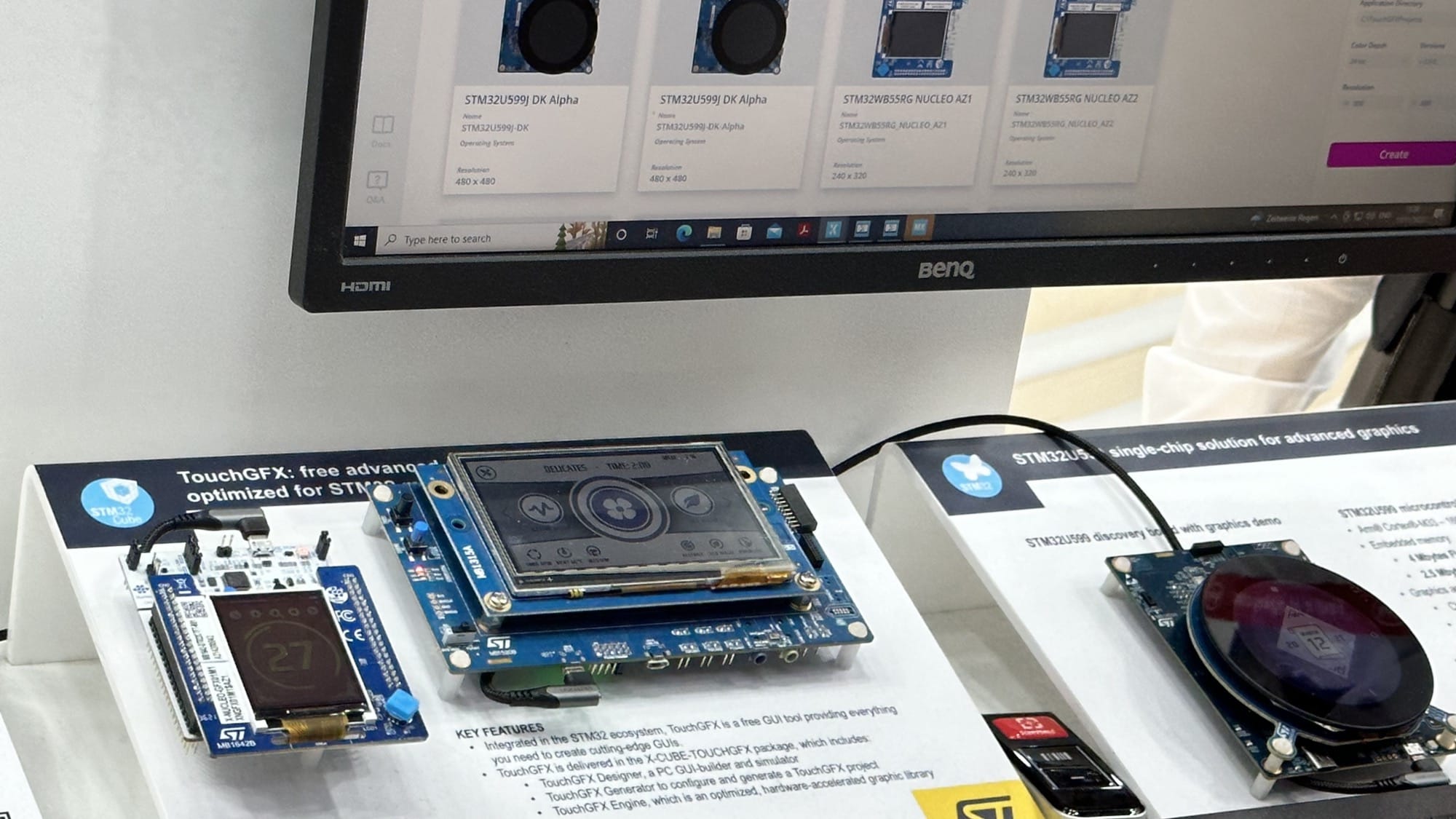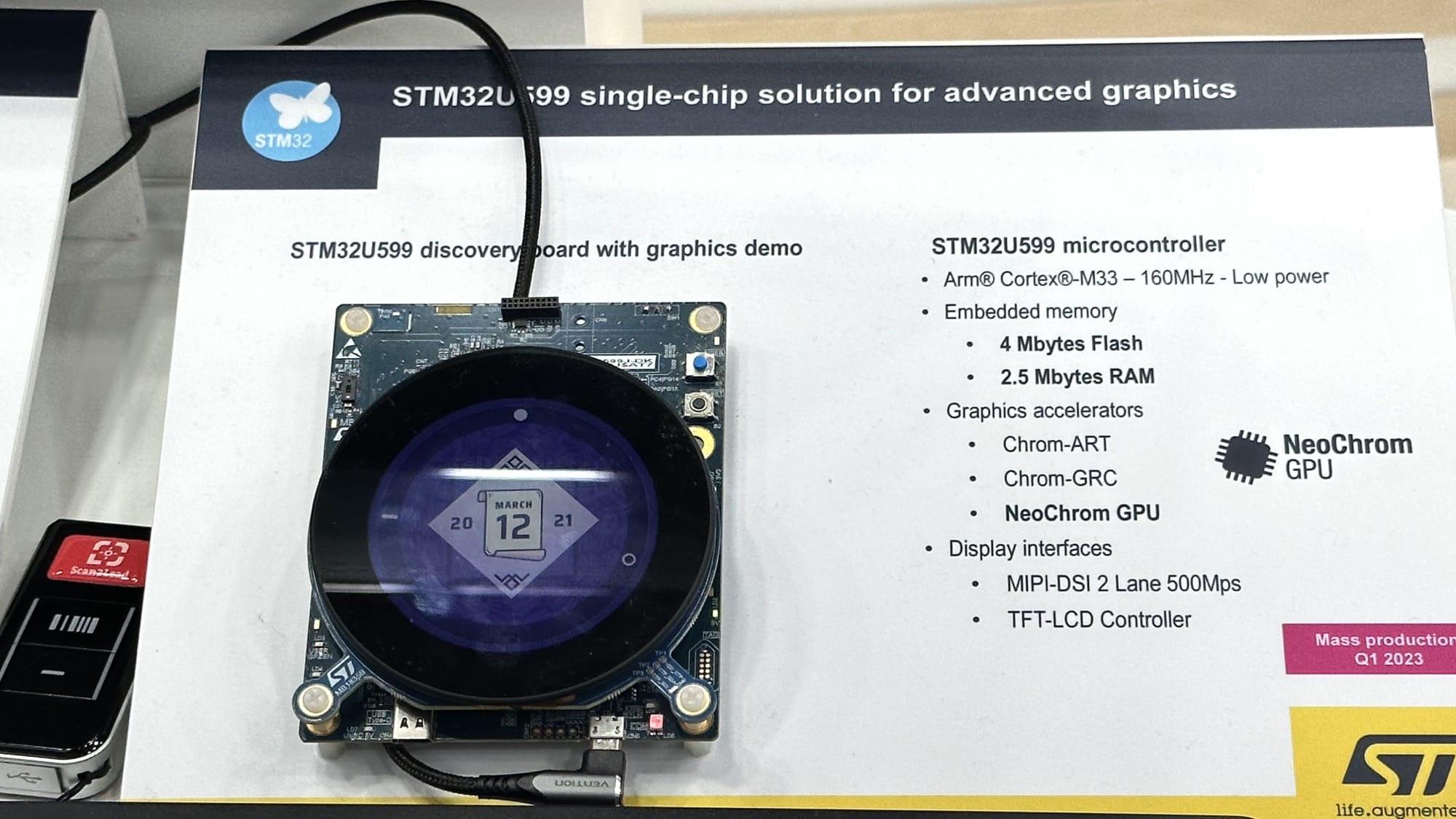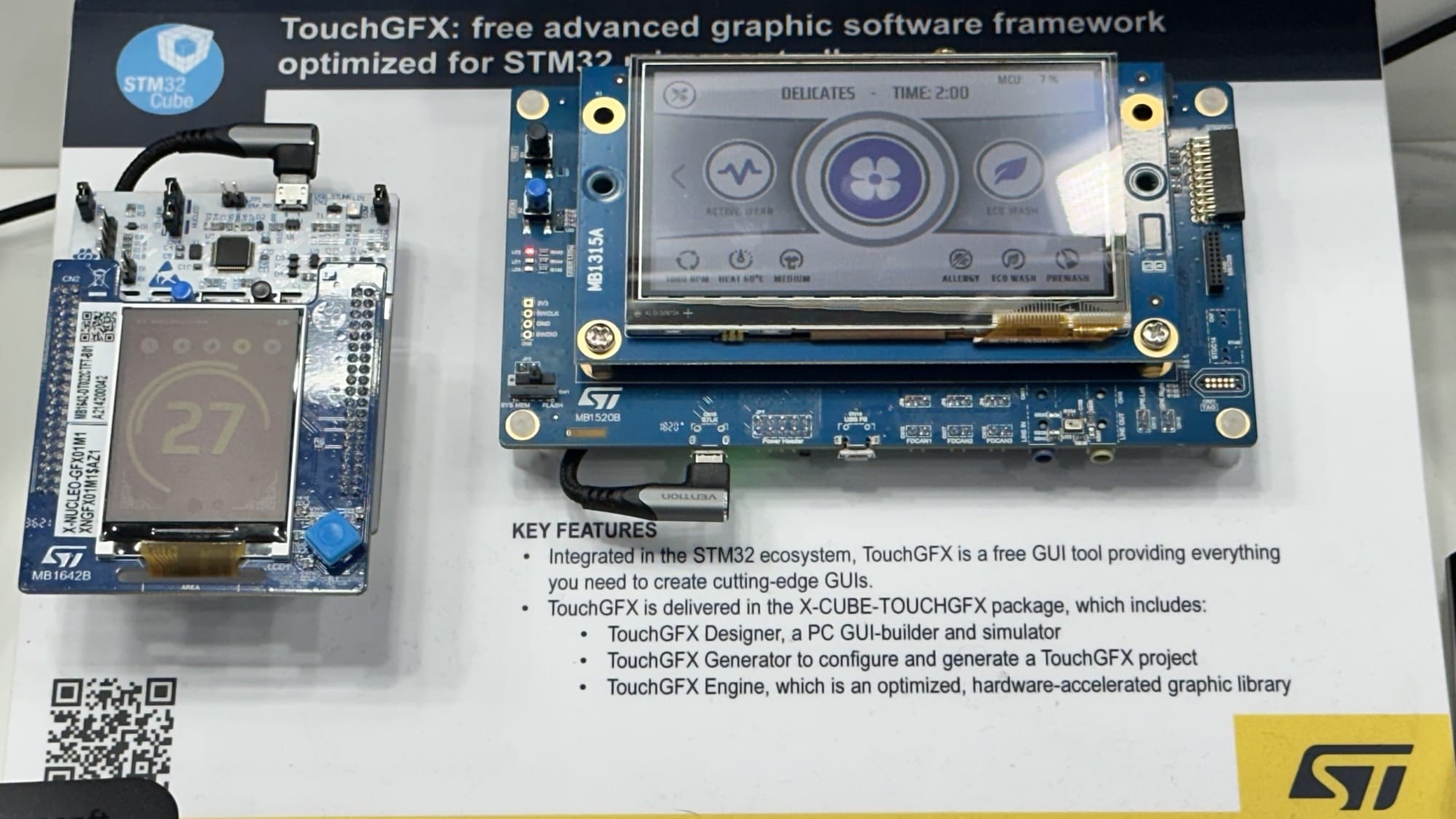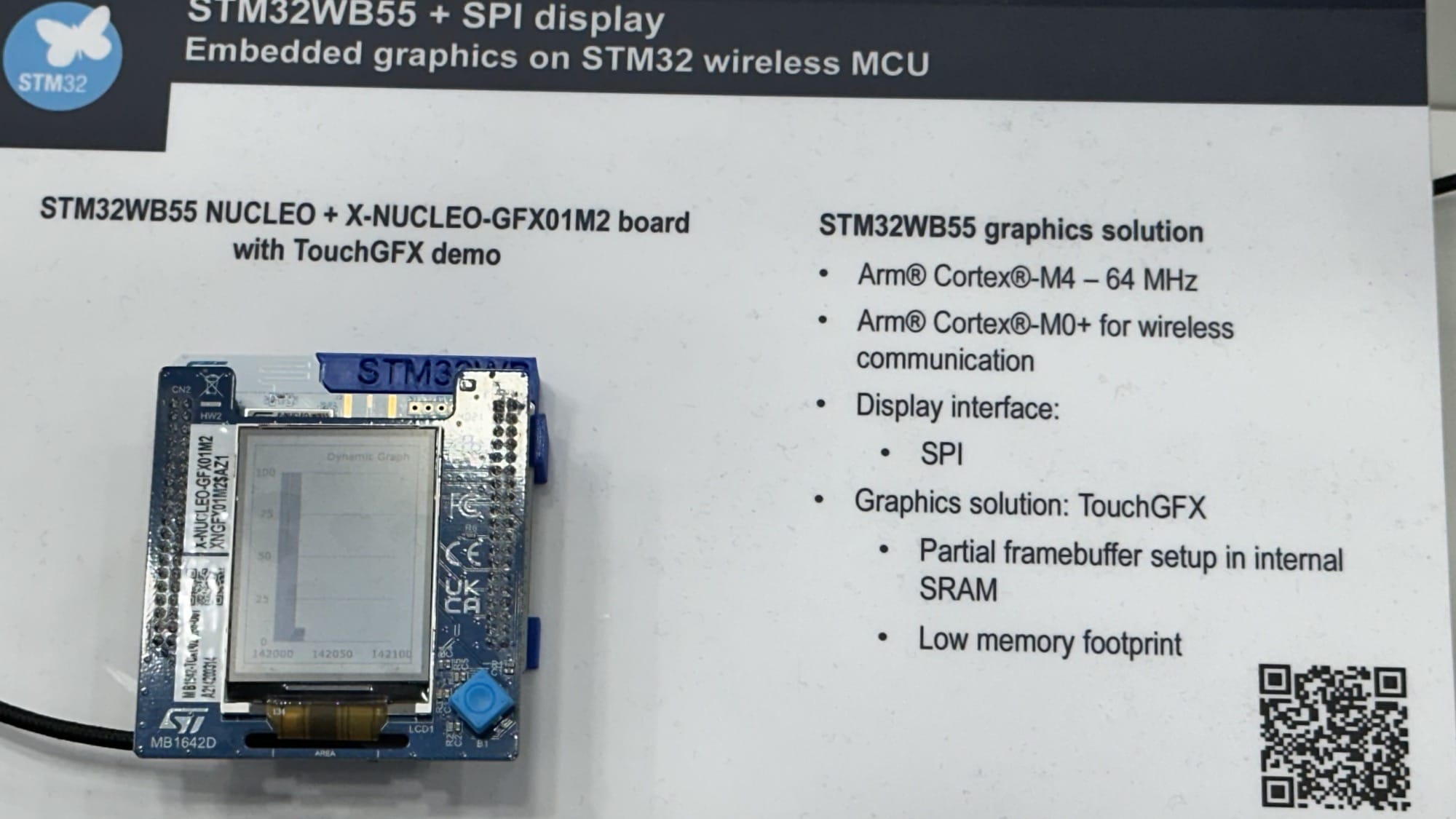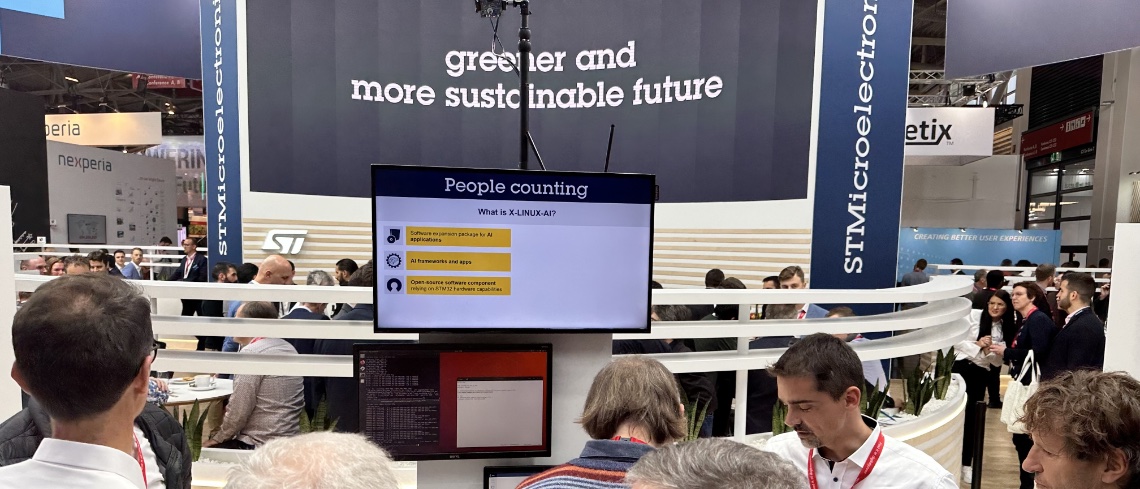Today, ST hosted a live stream on industrial AI applications at electronica 2022. The discussion highlighted the numerous efforts to democratize machine learning at the edge, bring more computational power to sensors, and how innovation can bring the industry together around connectivity and interoperability. Here are a few more demos that didn’t make it onto the live stream but that we wanted to share as a bonus to our readers.
STM32MP1 people counting demo
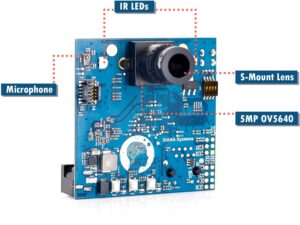
The demo showcases an MPCam system from Siana, a member of the ST Partner Program. The development board uses a five-megapixel image sensor to capture images and an STM32MP1 microprocessor to process them and run a machine learning algorithm counting people passing by.
Siana built its computer vision application with the help of OpenSTLinux, an embedded Linux distribution, and X-LINUX-AI, a software package that includes the most common frameworks for AI at the edge, such as Python, TensorFlow Lite, and OpenCV. As a result, MPCam can run machine learning demos out of the box. The electronica demo is, therefore, a launching point for engineers that can acquire the MPCam board from Siana and test their computer vision demo in minutes.
UIs on STM32
Graphical user interfaces are increasingly common and necessary in embedded systems, especially when offering machine learning at the edge. A rare luxury a few years ago, UIs are increasingly obligatory to ensure a smooth user experience. Hence, ST showcases a series of UIs that run on various microcontrollers, from STM32G0s to STM32H7s and STM32MP1s. Many of the presentations at our booth run on TouchGFX, ST’s free graphical framework for MCUs. For instance, a smart home interface using TouchGFX and an STM32H7 discovery kit (STM32H750B-DK) uses a 480 x 272 RGB display.
Similarly, another demo showed how to take advantage of ST’s Chrom-ART 2D accelerator, which optimizes memory access to process images faster. ST also released NeoChrom this year, which provides new drawing and animation acceleration. There’s even a demonstration combining TouchGFX and a machine learning algorithm to show how both can work in tandem in an image recognition application. Finally, ST also demonstrated how to bring UIs to embedded Linux systems using STM32MP1s with one presentation from Qt, a member of the ST Partner Program.
